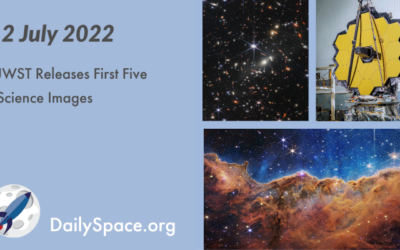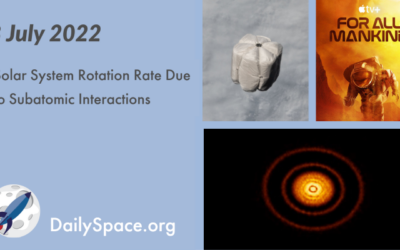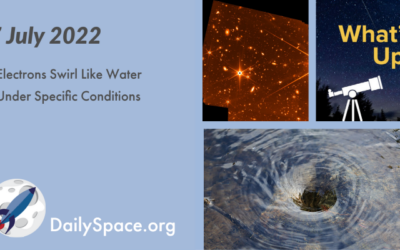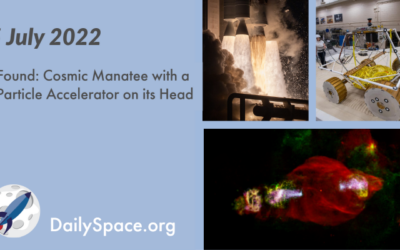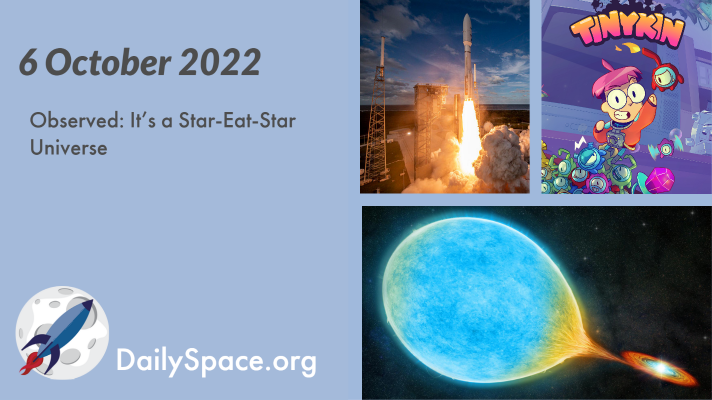
Observed: It’s a Star-Eat-Star Universe
While astronomers have observed white dwarfs consuming companion stars on numerous occasions, for the first time, they have now observed the consumption of the companion’s helium and not just hydrogen. Plus, galactic alignment, rocket launches including Crew 5, a new Europa image, and a review of the video game “Tinykin”.
Catch us on NowMedia TV
Saturday 11pm Central / midnight Eastern
Sunday 10pm Central / 11pm Eastern
Watch live on these stations: Houston 21.10, Atlanta 22.10
or tune-in on Apple TV, Roku, YouTube Live, or Amazon Prime
JWST Releases First Five Science Images
Starting with the stunning release of JWST’s first image of galaxy cluster SMACS 0723 on July 11, the bonanza continued the morning of July 12 with newly released images of Stephan’s Quintet, the Carina Nebula, the Southern Ring Nebula, and exoplanet WASP-96b. Plus, that controversial name and what’s ahead for the newest space observatory.
Solar System Rotation Rate Due to Subatomic Interactions
Using a first-principles approach, researchers have discovered that the differences in the rotational rate of the solar system are due to the inward and outward flow of cations and electrons. Plus, JWST’s first list of observations, a Starlink launch, dinosaurs, raining sand, and a review of episode two of this season’s For All Mankind.
Electrons Swirl Like Water Under Specific Conditions
Using etched tungsten ditelluride at nearly absolute zero, scientists have observed electrons swirling around like whirlpools, behaving as a fluid. The methods could be used to design low-energy devices. Plus, eavesdropping on aliens, machine learning on solar data, and some new observatories are in the works.
Infrared Telescope Balloon Mission Gets Mini-JWST Mirror
While waiting for the launch and commissioning of JWST, engineers designed an infrared telescope with a 2.5-meter mirror that will fly onboard a large research balloon to nearly 40 kilometers in altitude. Plus, fast radio bursts, robotic ammonites, and this week in rocket history we look back at Telstar-1.
Cosmic Manatee with a Particle Accelerator on its Head
Scientists observing the Manatee Nebula find that the supernova remnant contains a stellar-mass black hole that is emitting powerful, high-energy jets, creating the strange, double-lobed shape. Plus, rocket launches, mission updates from Mars and the Moon, and a spinning galaxy from the early universe.
Comet Storm Due in One Million Years
A star cataloged as Gliese 781 is approaching our solar system and in slightly more than a million years from now, will reach the Oort Cloud, likely disrupting the orbits of icy bodies that could head toward Earth. Plus, an Indian launch, Asteroid Day, understanding our ice giants, and a review of Kaiju Preservation Society by John Scalzi.


 We record most shows live, on Twitch. Follow us today to get alerts when we go live.
We record most shows live, on Twitch. Follow us today to get alerts when we go live.

